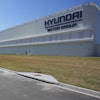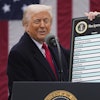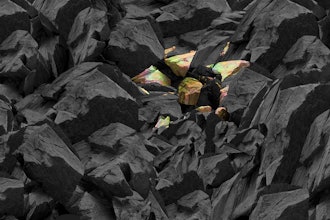This article originally appeared in the September print issue of IMPO.
Most maintenance professionals understand the importance of implementing or upgrading their reliability maintenance program, and many already have the knowledge and training to do it. The primary problem is time.
With the daily demands and responsibilities of their jobs, the need to increase production outputs and the constant “firefighting” required to keep critical systems running, they often fail to allocate enough time to the strategic planning that is crucial to successful RMP implementation.
In addition to the lack of sufficient time, they are often overwhelmed with the task and unsure where to start or what their focus should be. Some have described it as a big maze, while others prefer the analogy of eating an elephant.
To simplify this process, this article provides the nine critical steps necessary for successful implementation of a world class Reliability Maintenance Program. Before these steps begin, however, the number one recommendation is to enlist the services of a certified knowledgeable professional who can guide you through the process and help you perform some or all of the steps mentioned in this article.
Step 1 – Assessment
Conduct a comprehensive plant reliability assessment and equipment and lubrication audit that can be used to help you evaluate where you are currently and establish a baseline for later evaluation of the program. A professional will use this information to provide you with recommendations and a strategic plan – in phases – for implementation of your program.
Step 2 – Data Collection
Collect historical data and associated costs to understand the current state of operation. This entails determining what it costs the company to run each critical asset, and what it costs the company in labor, repairs and downtime when critical equipment is not operating efficiently and reliably.
Step 3 – OEM Checks
Evaluate each oil and grease application throughout the plant and determine if the lubricant product currently in use meets the OEM application recommendation. It is all too common to find the wrong lubricant types and viscosities being used, which can lead to premature failures, excessive energy consumption, unnecessary downtime and lost production.
Step 4 – Lube Consolidation
Determine potential for lubricant consolidation that would minimize the number of lubricants being managed and used throughout the plant. An excessive number of lubricants will drive up carrying costs and increase the chance of lubricant misapplication and cross-contamination.
Step 5 – Lube Room
Evaluate the existing lube room or storage and handling area. A professional will recommend the appropriate reliability storage systems, hardware and practices needed to transition the existing area to a world class lubrication room that will ensure that lubricants are organized, color-coded, properly labeled, and stored in a cool, clean, dry, contaminant-free environment.
Step 6 – Lube Management
Following up on the work begun in the lube room, all lubricants should be properly color-coded and labeled in lubrication transfer equipment and at the final application point on the plant floor. Color-coding and labeling ensures the right lubricant reaches the right lubrication point every time and eliminates the chance of lubricant mixing and misapplication.
This lubricant management process eliminates the risky lubrication-product-for-each-application guesswork so often employed by new lube technicians and mechanics responsible for lubrication PMs.
Step 7 – Contamination Control
Evaluate the contamination control program for critical equipment. A professional will follow up by recommending the necessary contamination control hardware, sized appropriately for contamination exclusion and removal — whether the contamination is oxidized oil, varnish, outside debris or moisture. Because 75 percent of all wear or surface degradation of this equipment is caused by outside debris and moisture, it makes economic sense to invest in the appropriate reliability hardware to keep the lubricant and critical components free from these destructive particulates.
Step 8 – Gap Analysis
Determine the necessary metrics for comparing the old state to the new state (after implementation). This performance tracking will enable return-on-investment studies to be calculated and documented to demonstrate measurable monetary savings to upper management that will justify the program’s overall and ongoing costs.
Step 9 – Training
For all maintenance personnel who support the company’s overall reliability goals and objectives, determine the appropriate ongoing training needed. These professionals need the necessary skills to be able to implement strategies that move them from a reactive program to a proactive and preventative maintenance program.



















